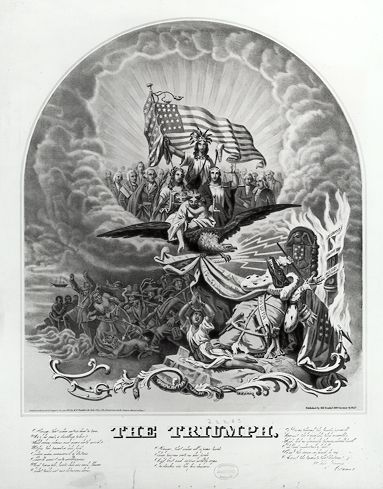|
The Relationship between Religion and Society: Religion as a Reflection of Society |
||
|
Some have argued that religion mirrors the larger society. In other words, religion embodies and gives authority to the values, standards and ideals of society or the state. This was the conclusion of Emile Durkheim. “For Durkheim the explicit content of religious ideas was not that important; religion expressed not theological but sociological reality.” |
||
| One must admit that there is some truth in this approach. In every religious tradition, there are elements that reflect society’s values more than the essence of the religious teaching. For example, one Islamic scholar notes the inheritance law in Islam which seem to favor males “reflects the patriarchal context in which the Qur’an was revealed.” Similar observations could be made regarding the laws of the Hebrew Scriptures which clearly place a higher value on the lives of men. Many would argue that in these cases, religion is simply reflecting the values of society. | ||
|
||
| One very interesting example that seems to support Durkheim’s conclusion is what has been identified as America’s “civil religion.” In 1966, sociologist Robert Bellah wrote a fascinating essay that identified and characterized American civil religion. | ||
|
As you read this article, be sure that you understand that Bellah’s civil religion is not to be equated with Christianity, although it is strongly influenced by the terms and language of the Judeo-Christian tradition. For example, the founding fathers spoke of Europe as Egypt and America as the new Promised Land. The migration from the old world to the new was expressed in terms of the people of Israel crossing the Read Sea out of Egypt to freedom. George Washington becomes a second Moses and Abraham Lincoln assumes a Christ-like role. Nevertheless, this civil religion is never equated with Christianity. It is quite distinct and more generic than Christianity or any religion. It is however, something more specific than “religion in general.” It has its own scriptures: the Constitution, Declaration of Independence and the Gettysburg address. It also has its own ritual calendar that includes Memorial Day, Thanksgiving Day and the Fourth of July. |
|
|
| Civil religion believes that God is involved in history and that God has a special concern for America. The God of America’s civil religion is characterized in terms of law, order and justice rather than salvation and love. | ||
|
Thus, Bellah sets forth a compelling claim for the existence of a religion of the nation that is formulated more or less consciously and that reflects the understandings and values of society. Note that Bellah himself does not see this as necessarily a negative force. In his conclusion, Bellah notes, “But it (civil religion) is a heritage of moral and religious experience from which we still have much to learn as we formulate the decisions that lie ahead.” In other words, Bellah recognizes that this civil religion that expresses the values of American society can play the positive role of uniting people and giving a sense of identity. |
|
While the so-called American civil religion is a clear example of how a society’s values and ideals can create a type of religion, there are other ways in which religion reflects and reinforces the values of a society. The Sacred Quest notes that Ernest Troeltsch demonstrated that the role of state supported Churches in Europe (especially in the late 19th century) had the social function of under girding the ideals and values of the state. In such cases it is clear that religion function to help maintain the status quo: it legitimizes the government, social institutions and prevailing values and ideals of society.
|
|
